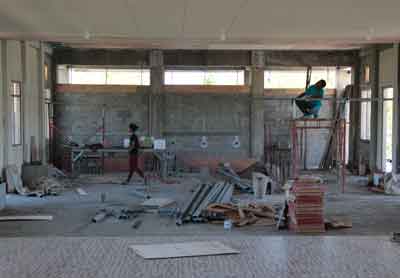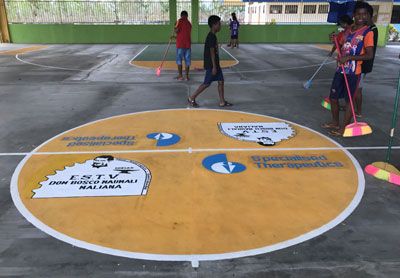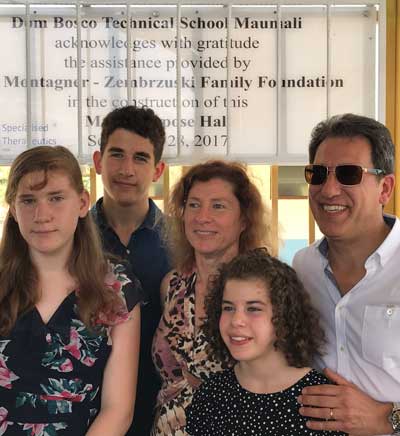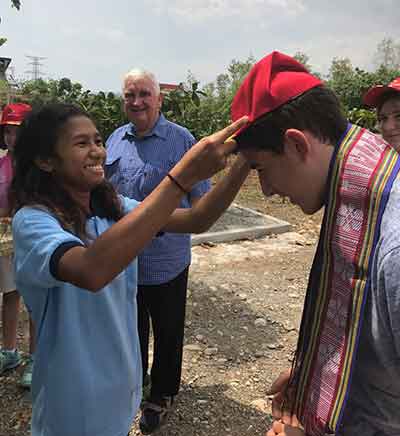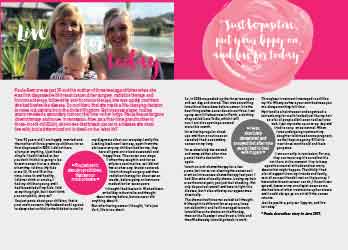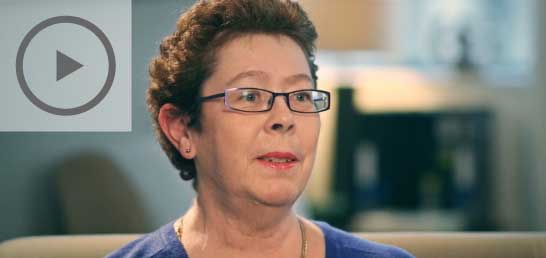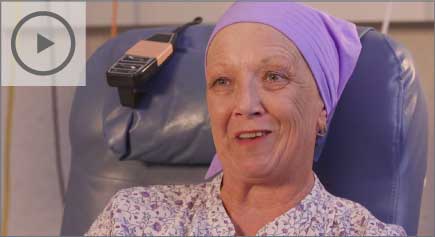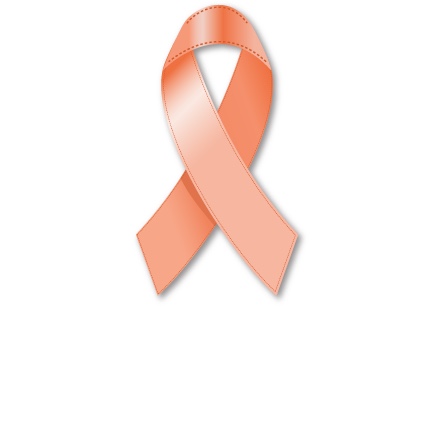
DR HILDA HIGH – PRIVATE CANCER GENETICIST.
While Dr Hilda High was always intent on a career in medicine, her professional life took a few tangents before her true calling again beckoned. Following a dietetics degree and experience in computer programming, Hilda began her medical training relatively late in life, at age 32. Now, at 50, she is among Australia’s telehealth pioneers, after establishing a private cancer genetics clinic in NSW four years ago. Last year she consulted with more than 200 families around the country, sometimes face to face and sometimes remotely. She describes cancer genetics as endlessly fascinating and concedes that working in a private practice has enabled unrivalled flexibility, both personally and professionally. Still, finding her niche has not been without its challenges.
Tell us about your career path and how you came to choose cancer genetics?
Medical oncology was something I had always wanted to do, from the day I started as a medical student. Cancer genetics was something I only became aware of in my final year of specialist medical oncology training. And I absolutely love it. There are a couple of reasons I went into cancer genetics instead of medical oncology. I was a sole parent – a sole parent with a young daughter. I did not want on-call, overtime or weekends. And cancer genetics has no medical emergencies. The second reason is, I find it intellectually fascinating as well as being a preventative form of medicine. That it turned out to be suited to Telehealth was a lucky bonus. Basically, it ticks all the boxes for me. The reason I went into private practice was in part, because cancer genetics allowed me to have no on-call obligations. Also, I found a niche doing telehealth to rural families, something that was relatively easy in private practice but can be complicated to do from a public hospital setting.
What would you have liked to know before moving into private practice?
Nobody tells you about the ancillary costs of running your own business. Things like the IT costs, setting up telephones, organising premises, those sorts of things and the hiring and firing staff: all of the parts that nobody teaches you at medical school.
Many doctors today still don’t understand how their billings work, how Medicare works – because they don’t have to. It gets done for them behind the scenes.
Because I work privately, and because I do Telehealth, I need to understand my own billings and that means understanding Medicare very well. But it’s not something that was ever formally taught. Understanding how telehealth worked, how billings had to be set up, was essential to establishing a successful private practice.
Should advanced trainees have some business training before working in private practice?
I think it should be part of every placement. Advanced trainees should be asking their bosses – working in either public or private practice — what the costs are. Because even if you are a head of department in the public setting, you will still have to deal with a budget, manage staff and deal with software. I think advanced trainees overall tend to concentrate on learning their specialty. I would say to them, ‘you should spend an equal amount of time learning to run a practice, public or private’.
So what advice you would give advanced trainees?
One thing that is very helpful is to do a fellowship year or to start by working as a locum, or by somehow attaching yourself to an experienced established oncologist.
I did a fellowship year. This meant spending a year working as a specialist, but still under the umbrella, or the care of a consultant who was running a public clinic. And that was much more useful than when I was a registrar. Towards the end of the year I realised there was no suitable position for me anywhere in Australia given that cancer genetics is a small field. So, I had to make a decision either to set up my own practice or to find a position as a medical oncologist. That’s when I registered Sydney Cancer Genetics as a business name and committed to setting up my own cancer genetics private practice.
I took a room in an existing and very supportive practice, working for a percentage of earnings. When I started my telehealth practice, I ran it from a home office. That kept costs low and meant that I wasn’t going to lose money (if you are paying room rental you can earn less than nothing!).
What else helped you along the way and what advice would you impart to current advanced trainees?
Mentors. I strongly recommend all advanced trainees find at least one mentor. They may not be in the same speciality, although that helps and may not be in the same city as you. They are someone who you can bounce ideas off and be supported by.
Another tip: If possible, it’s great when you are starting out to work for a percentage of your earnings and use the infrastructure of an existing practice – things like their patient database, their transcription service, their billing service. This allows you to find your feet as a consultant and then start to learn the ‘ins and outs’ of running a business.
When you are spending time with different doctors, you are being exposed to different management styles, different practice styles, and different patient software. Even learning how not to do things is useful!
Also, work for someone else first. Most practices need locums, so while you are doing that, you can be passively or actively acquiring that information. I have found people are incredibly generous with their time and their support. If you are having problems finding that right person, find a mentor who is not in competition with you. For example, someone who lives and practices in a different state. I am glad I took the time to really learn the behind the scenes things and to really understand every aspect of running my practice.
Best thing about private practice?
I think going into private practice is a personality match as much as anything. I could work within the public system, but private practice gives me significantly more personal flexibility such as around holidays and working hours as well as the ability to move the business in new directions to address patient needs and opportunities much more rapidly than I would be able to in the public system.
In my clinic, I am a sole practitioner. The beauty of private practice – if you become too busy, you can employ somebody else to work with you.
What does the future hold for advanced trainees, in your opinion?
It is going to be important to find a niche. I think there is going to be an oversupply of specialists wanting to work in large centres. I think there is going to be a greater push to make public hospital specialists work for billings, which means removing the flexibility of private practice and removing the security and perks (such as annual leave/ super / conference leave etc.) of a public position at the same time. Specific to Medical Oncology, I think the number of treatments and the way we approach cancer is going to continue to change with a much greater emphasis on the molecular genetics of the cancers.
Final words?
I am extremely glad I moved into private practice. I don’t think it is as lucrative as a secure quality position in the public system (if such a thing exists!). But it has given me an amazing amount of freedom and a huge amount of personal and intellectual satisfaction.


